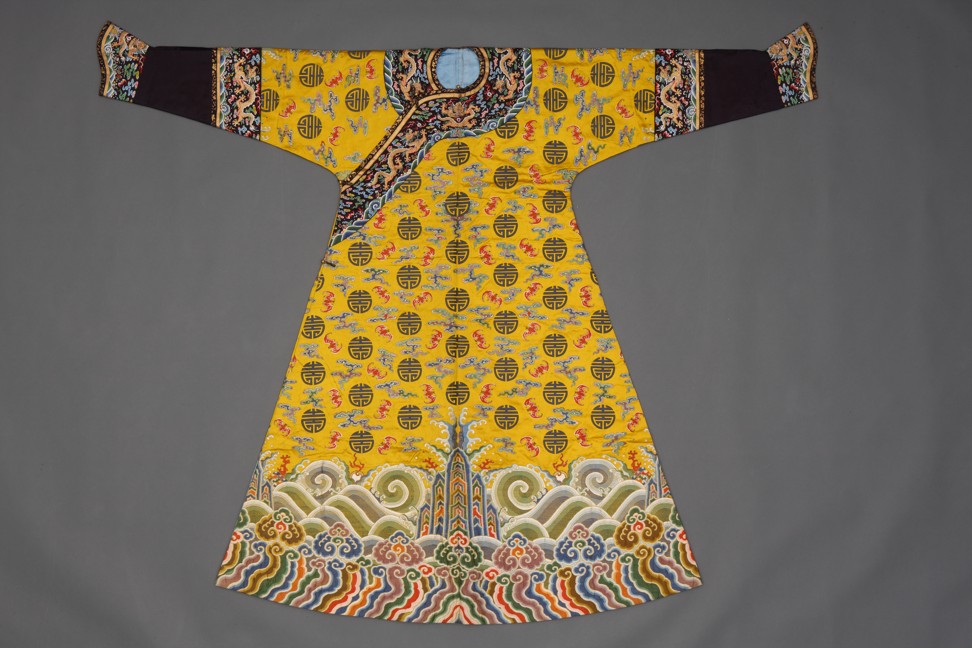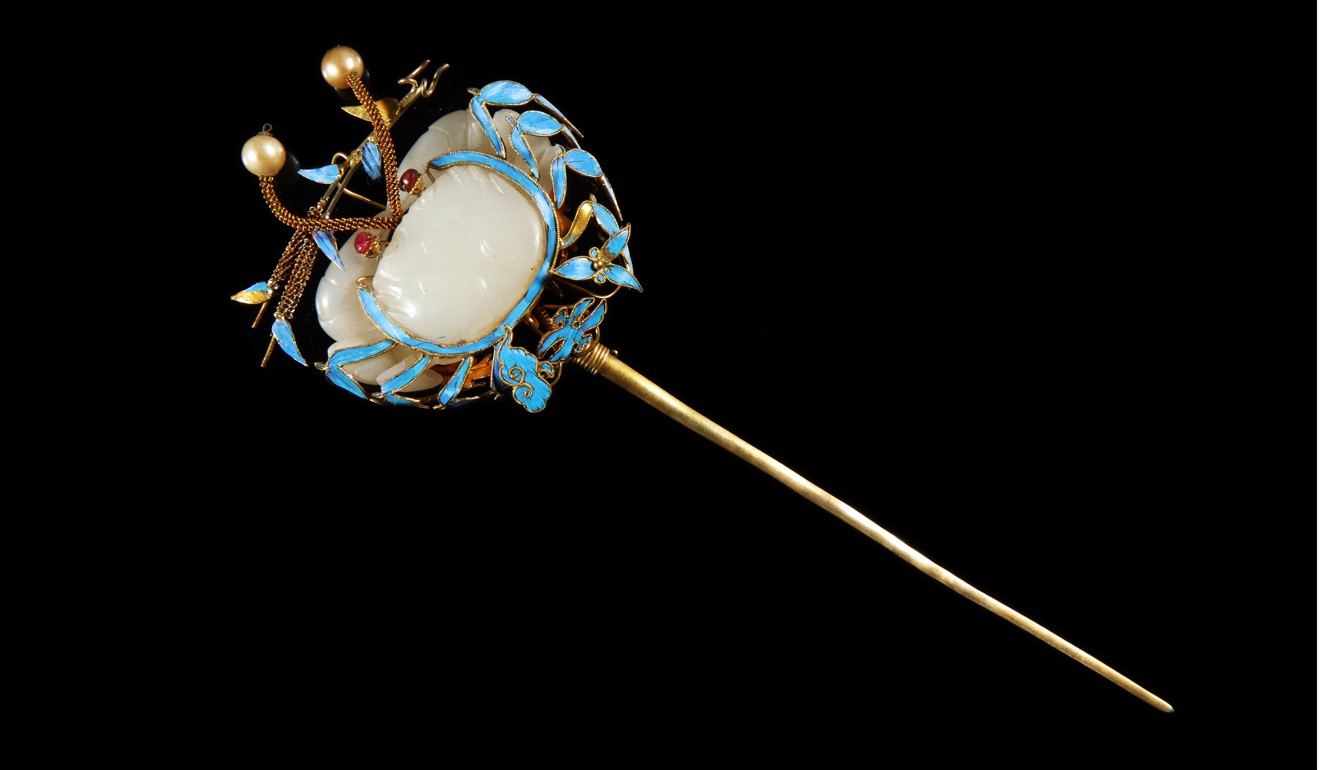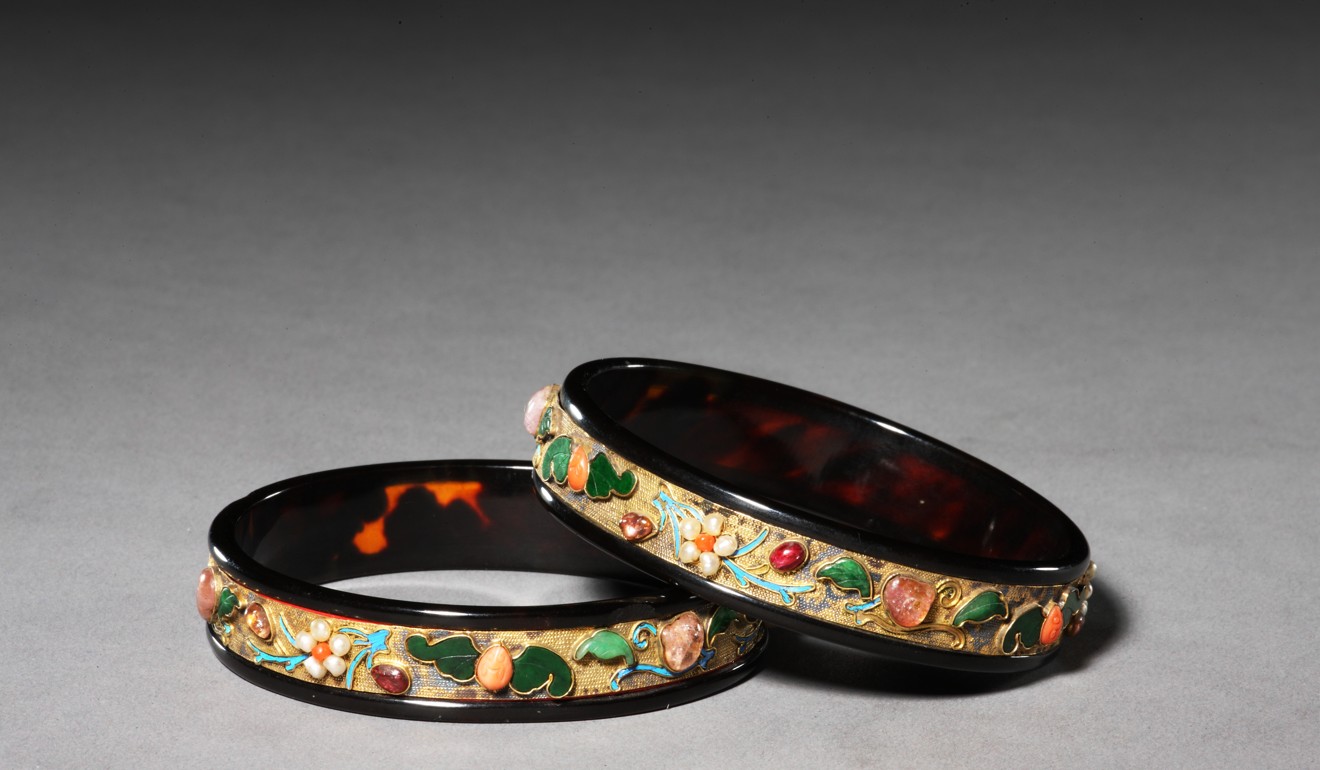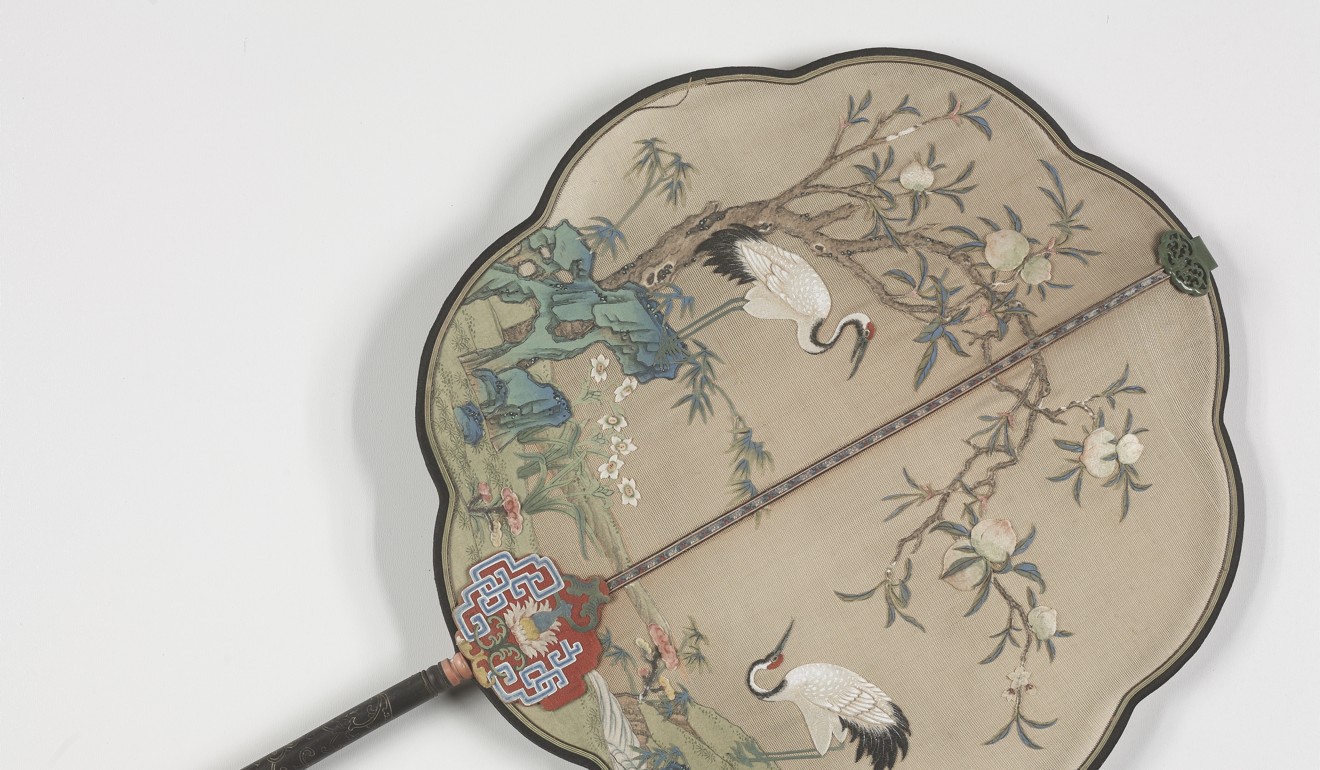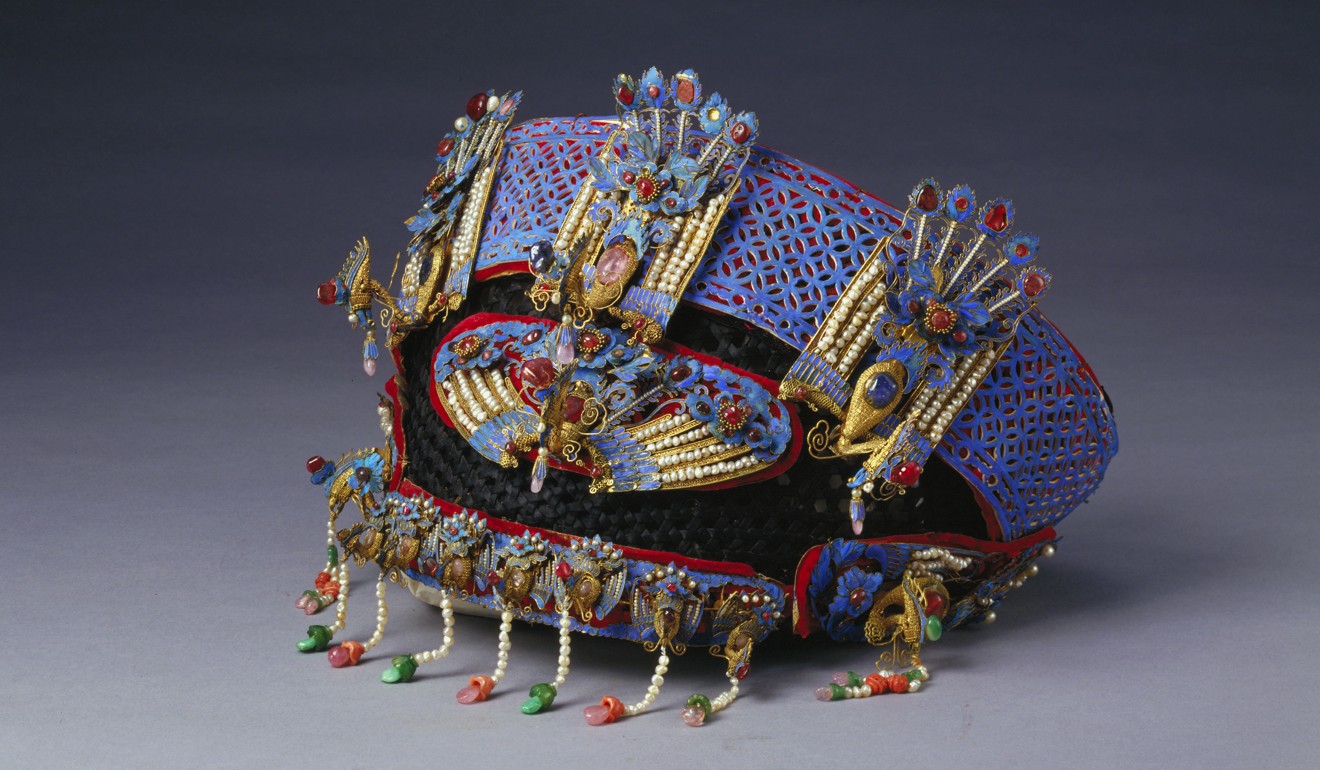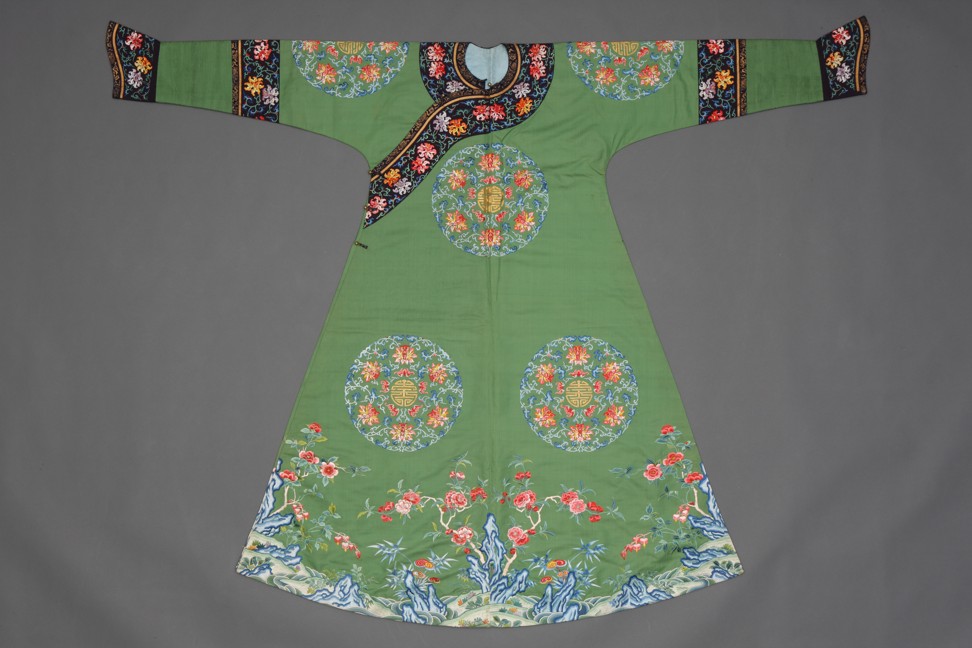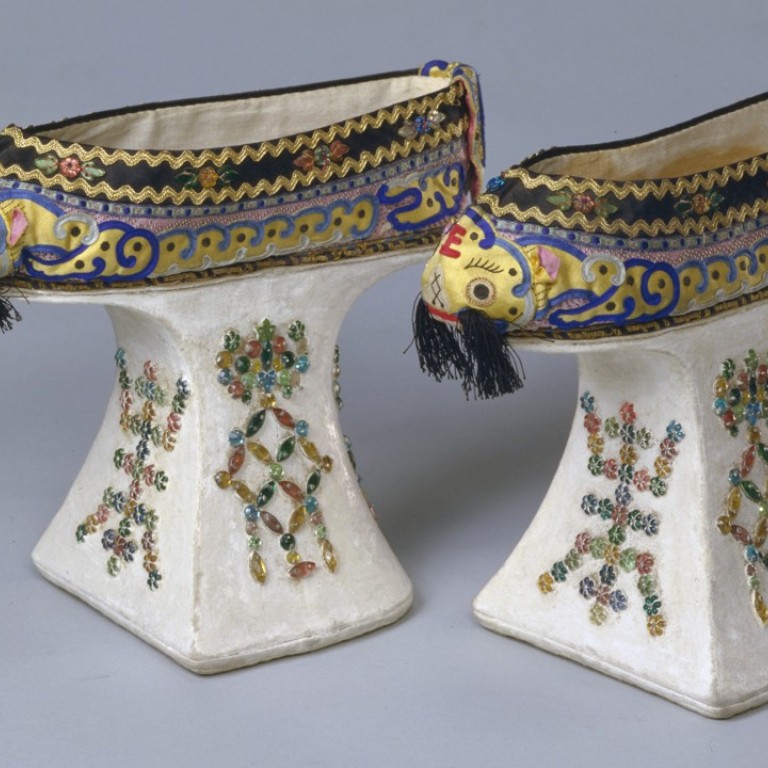
China’s Qing dynasty empresses, their lives, riches and erotica celebrated in book
Lavishly illustrated volume lifts the veil on life in the Forbidden City by looking at the robes, jewellery, and accessories empresses wore and the sensuous paintings that adorned their walls
Empresses of China’s Forbidden City, 1644–1912
edited by Daisy Yiyou Wang and Jan Stuart
Yale University Press
3.5/5 stars
Nearly 200 spectacular artefacts – including ornate jewellery, intricately embroidered robes and portraits – picked from Beijing’s vast Palace Museum collection to illustrate the lives of empresses in China’s Qing dynasty feature in a new book.
Lavishly illustrated, Empresses of China’s Forbidden City, 1644-1912 emphasises the key roles the wives of China’s imperial rulers played in court life and the cosmopolitan culture of the age.
Life inside the Forbidden City: how women were selected for service
“To many people, Qing imperial women lived in a mysterious, yet colourful world. In the official history and archives of the Qing imperial court, empresses and other consorts were largely overshadowed by emperors, who were often judged by their political achievements. Despite the patriarchal structure of the Qing imperial court, a few women stood out and played an important role in history,” Palace Museum director Shan Jixiang writes in the introduction to the book, which is edited by Daisy Yiyou Wang and Jan Stuart.
The book is an accompaniment to a major international exhibition at the Peabody Essex Museum in Salem, Massachusetts, which coincides with the 40th anniversary of the establishment of diplomatic relations between the United States and China.
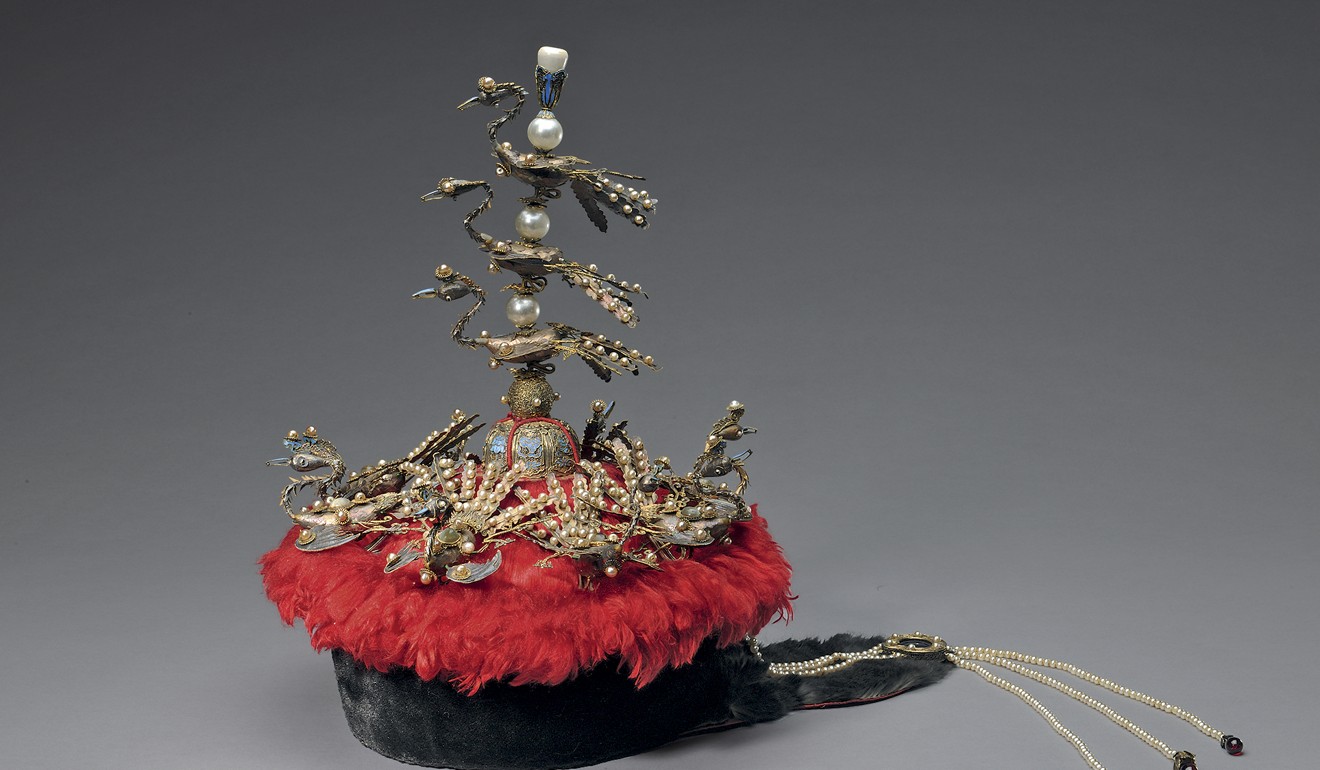
Many of the items are tastefully erotic. Stuart points to Yinzhen’s Twelve Ladies, a series of paintings by 18th century artists of the imperial court.
“Images that hint at physical union and its potential result abound in Yinzhen’s Twelve Ladies. Butterflies fly wing to wing and penetrate a flower, two amorous cats cavort, and a pair of goldfish swim together,” she writes.
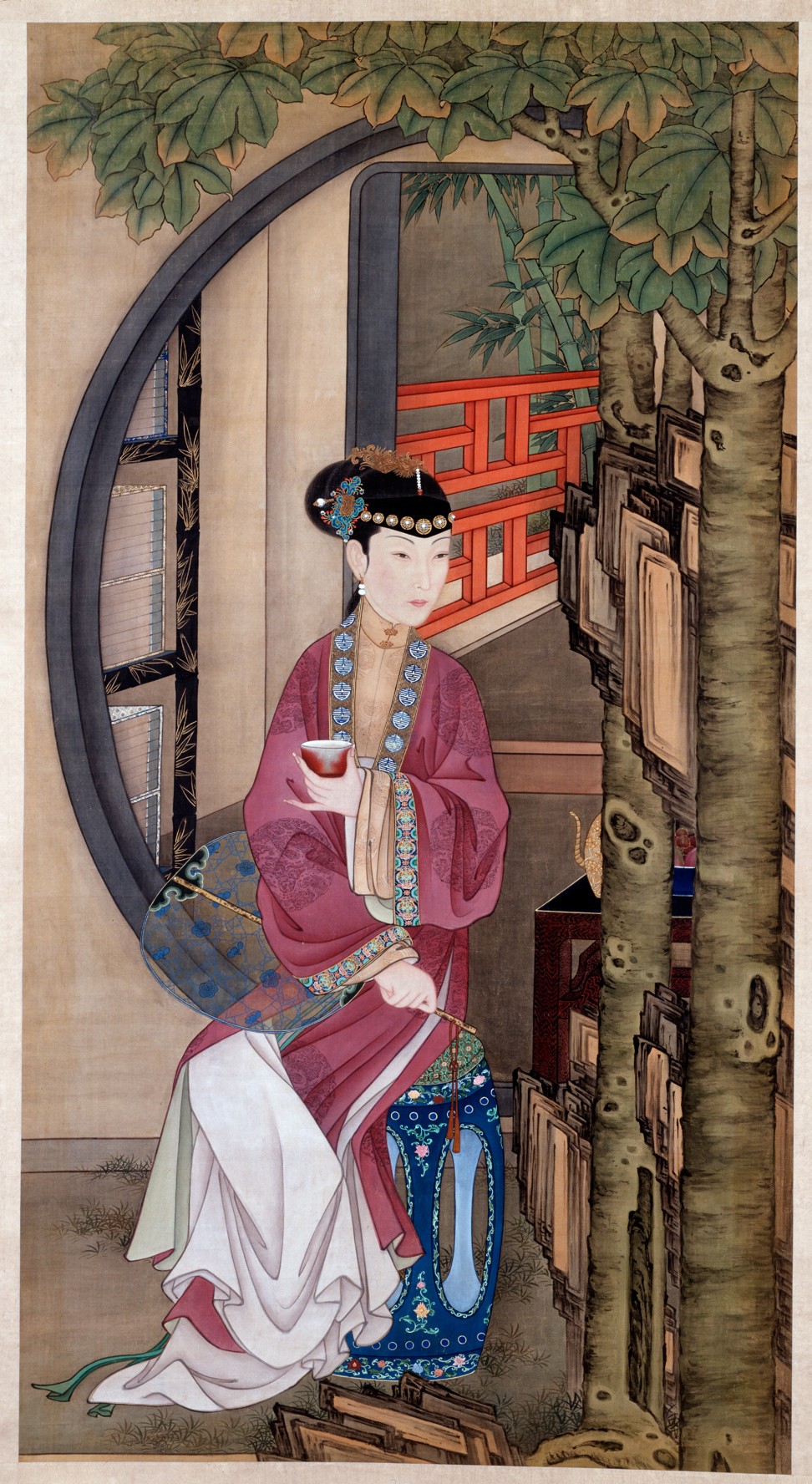
In a painting of a woman gazing into a mirror, the red glazed bowl beside her contains a fragrant fruit offered for good luck at temples during Chinese New Year.
“However, the fruit also has a hidden meaning. Its shape is suggestive of female genitalia, so Qing painters often appropriated it as sign of sexual availability,” Stuart writes.
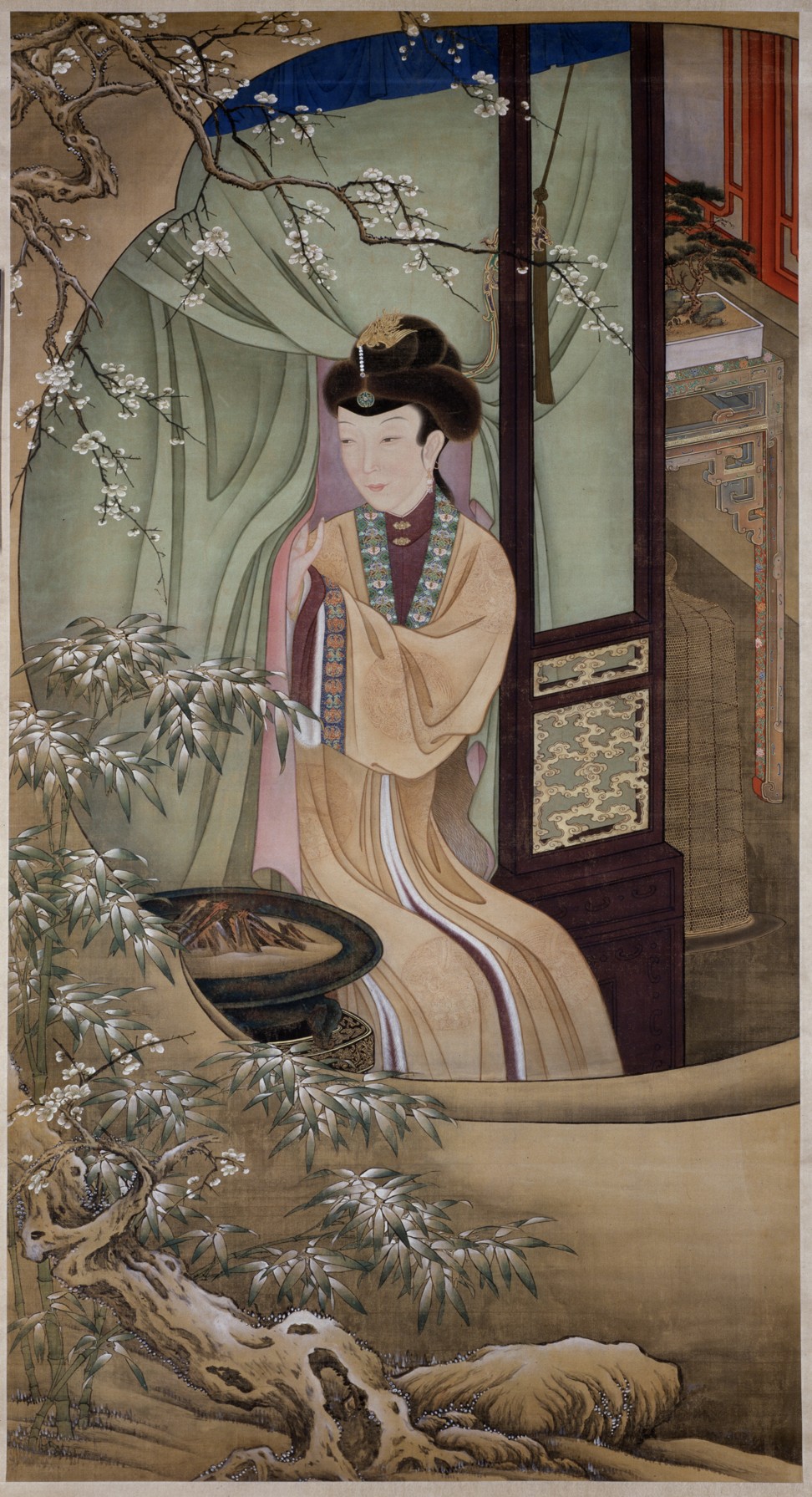
The book features essays and entries by co-editor Wang and several other scholars: Lin Shu, Luk Yu-ping, Ying-chen Peng, Ren Wanping and Evelyn Rawski.
Rawski evokes just how relentlessly hierarchical court life was. A consort’s rank decided the quantities of robes, jewellery, stipends, and servants assigned to her, with tiny gradations marking status distinctions.
New Chinese science fiction anthology promises to reignite the genre
For instance, the empress dowager was given 12 maids, the empress 10 maids, and so on down to the lowest-ranking consort, who might have just one.
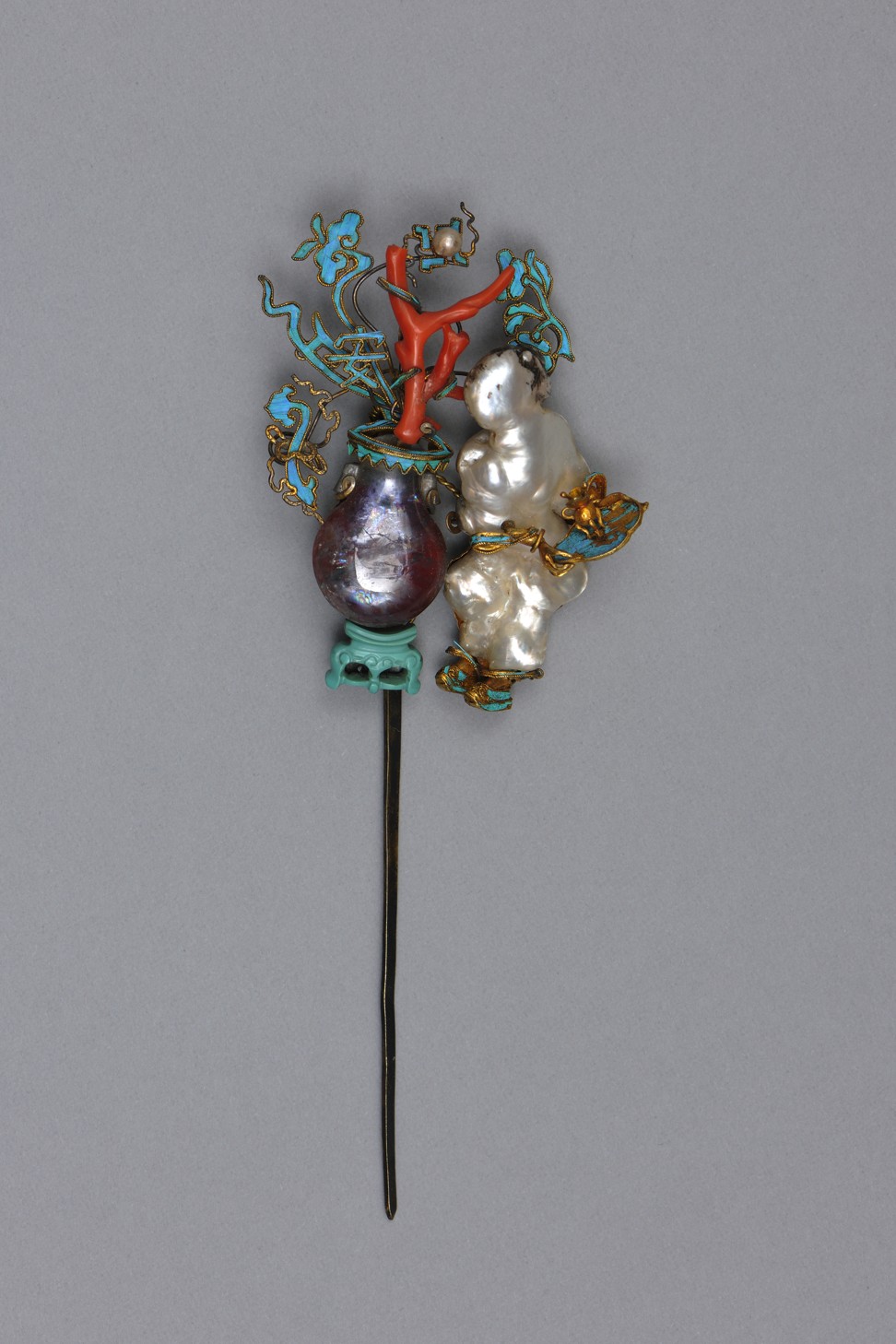
The publication also features essays and entries by co-editor Daisy Yiyou Wang and several other scholars: Lin Shu, Luk Yu-ping, Ying-chen Peng, Ren Wanping and Evelyn Rawski.
Rawski evokes just how relentlessly hierarchical court life was. A consort’s rank decided the quantities of robes, jewellery, stipends, and servants assigned to her, with tiny gradations marking status distinctions.
New book documents dying Hong Kong trades and the artisans keeping them alive
For instance, the empress dowager was given 12 maids, the empress 10 maids, and so on down to the lowest-ranking consort, who might have just one. Each consort was allocated eunuchs and nurses along with female slaves who conducted menial tasks including needlework, fetching water, lighting lamps, and readying offerings for altars.
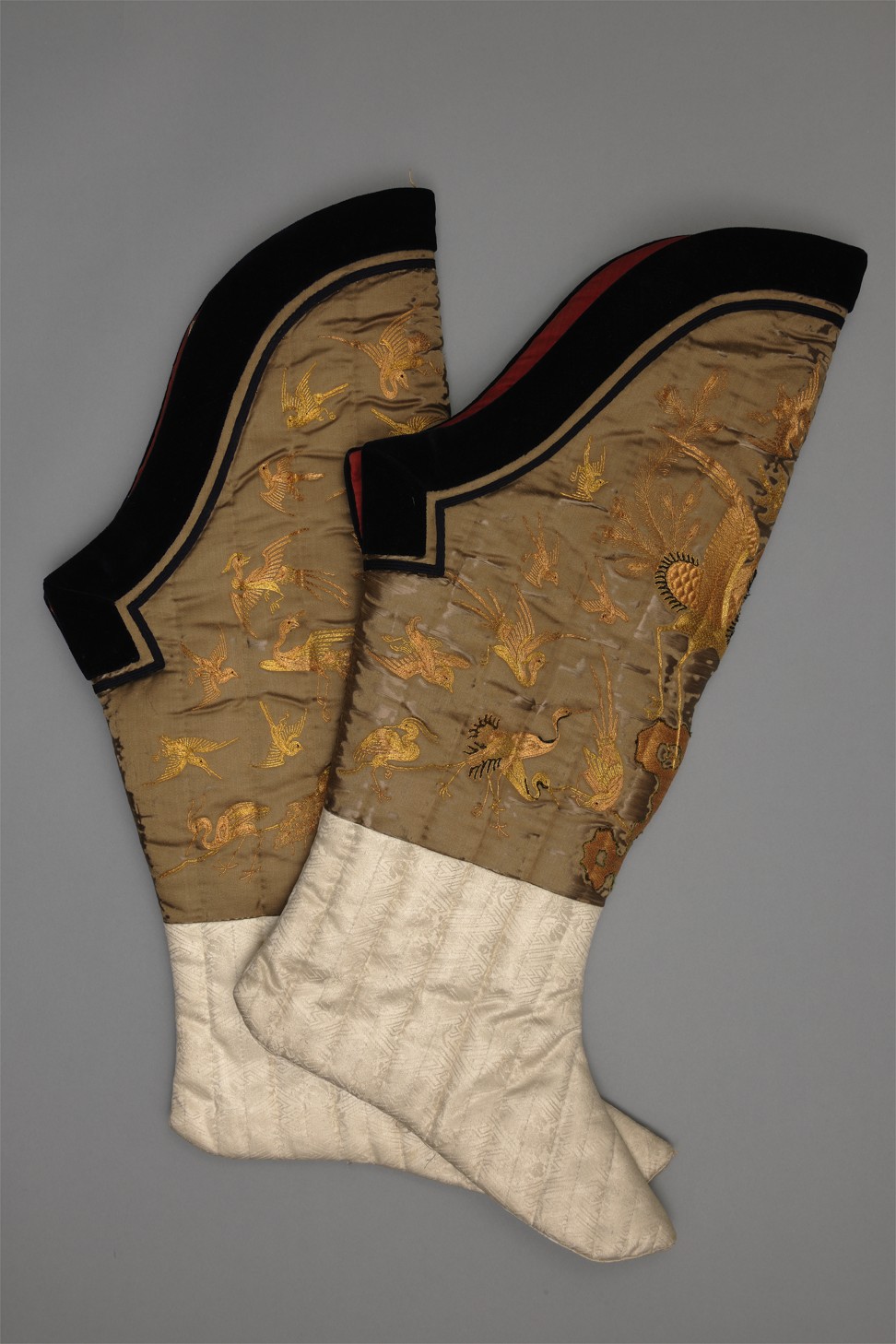
Not long after the Empress Dowager Cixi died in 1908, China’s last dynasty would be supplanted by the Republic of China. “In the next decades, women in China would step out of the inner quarters and participate in politics as individuals rather than as annexes to men who wielded authority in the name of filial piety,” notes American University scholar Ying-chen Peng.
If the loss of all the grandeur and colour seems sad, Empresses of China’s Forbidden City recalls an era that was much more glamorous and romantic – for the lucky few at least.
